I am a dedicated and passionate professional with a background in Agriculture Engineering. My journey in the field of rural development and agricultural research has allowed me to acquire valuable knowledge and experience. I am driven by the desire to contribute to sustainable development, particularly in rural areas. I actively engage in projects and initiatives aimed at empowering micro, small, and medium enterprises I believe in continuous learning.
Don't wanna be here? Send us removal request.
Text
Nutritional Health Benefits of Millets
About Millets
Millets offer nutritional security and there is a need for promoting millets as they are highly nutritious. These have been important food staples in human history, particularly in Asia and Africa. Sorghum and other millets consumption usage as direct food has significantly declined over the past three decades. The decline in demand has led to the decline in millets production considerably in India. Production of sorghum in India has come down from 7 million tonnes during 2010-11 to 4.2 million tonnes during 2015-16; bajra production was reduced from 10.4 million tonnes to 8.1 million tonnes, production of ragi reduced to 2.2 million tonnes to 1.8 million tonnes and small millets production came down to 0.39 million tonnes from 0.44 million tonnes during the same period. According to the FAO statistics, 2017 millets production in the world was Sorghum (Sorghum bicolor (L.) Moench) is the fifth major cereal of the world after maize, paddy, wheat and barley as per FAO production data of 2014. This Nutritional Bulletin includes nutritional profile of Sorghum, Pearl millet, Finger millet, Foxtail millet, Common millet, Little millet, Barnyard millet and Kodo millet. Almost all the millets are used for human consumption in most of the developing countries, but their use has been primarily restricted to animal feed in developed countries. Sorghum and millets are gluten free, hence, are useful dietary cereals. In general millets are rich source of fibre, minerals and B-complex vitamins. High fibre content and presence of some anti-nutritional factors like phytates and tannins in millets affect bioavailability of minerals. Few studies in humans have suggested that absorption of iron tends to be lower from millets than from rice or even wheat. (Rao et al.,1983). Millets are also rich in healthpromoting phytochemicals like polyphenols, lignans, phytosterols, phyto-oestrogens, phytocyanins. These function as antioxidants, immune modulators, detoxifying agents etc. and hence protect against age-related degenerative diseases like cardiovascular diseases (CVD), diabetes, cancer etc. (Rao et al., 2011). Some of the known nutrients vitamins, minerals, essential fatty acids also have benefits in terms of prevention of degenerative diseases besides their known functions of preventing nutritional deficiency diseases. Being non-glutinous, millets are safe for people Executive Summary 6 F Nutritional and Health Benefits of Millets suffering from gluten allergy and celiac disease. They are non-acid forming, easy to digest and non-allergenic (Saleh et al., 2013). Millets have potential for protection against age-onset degenerative diseases. Consumption of millets reduces risk of heart disease, protects from diabetes, improves digestive system, lowers the risk of cancer, detoxifies the body, increases immunity in respiratory health, increases energy levels and improves muscular and neural systems and are protective against several degenerative diseases such as metabolic syndrome and Parkinson’s disease (Manach et al., 2005; Scalbert et al., 2005; Chandrasekara and Shahidi, 2012). The important nutrients present in millets include resistant starch, oligosaccharides, lipids, antioxidants such as phenolic acids, avenanthramides, flavonoids, lignans and phytosterols which are believed to be responsible for many health benefits
Millets are a group of highly variable small seeded grasses, widely grown around the world as cereal crops or grains for fodder and human food. They do not form a taxonomic group, but rather a functional or agronomic one. Millets are important crops in the semi-arid tropics of Asia and Africa (especially in India and Nigeria), with 97% of millet production in developing countries. The crop is favoured due to its productivity and short growing season under dry, high-temperature conditions. The most widely grown millet is pearl millet, which is an important crop in India and parts of Africa. Finger millet, Proso millet, and Foxtail millet are also important crop species. In the developed world, millets are less important. For example, in the United States only Proso millet is significant, and it is mostly grown for bird seed. While millets are indigenous to many parts of the world, it is believed that they had an evolutionary origin in tropical western Africa, as that is where the greatest number of both wild and cultivated forms exist. Millets have been important food staples in human history, particularly in Asia and Africa. They have been in cultivation in East Asia for the last 10,000 years. Sorghum and millets have been important staples in the semi-arid tropics of Asia and Africa for centuries. These crops are still the principal sources of energy, protein, vitamins and minerals for millions of the poorest people in these regions. Sorghum and millets are grown in harsh environments where other crops grow or yield poorly. They are grown with limited water resources and usually without application of any fertilizers or other inputs by a multitude of small-holder farmers in many countries. Therefore, they are mostly consumed by disadvantaged groups; they are often referred to as “coarse grain” or “poor people’s crops”. They are not usually traded in the international markets or even in local markets in many countries. The farmers seldom, therefore, have an assured market in the event of surplus production. The cereals considered in this publication include sorghum, Pearl millet, Finger millet, Foxtail millet, Common millet, Little millet, Barnyard millet and Kodo millet. Teff (Eragrostis tef), which is extensively cultivated in Ethiopia, is not strictly a millet and is therefore not included. Other millets such as fonio (Digitaria exilis) and Job’s tears (Coix lancryma -jobi) are of minor importance.
Major Millets:- Term "major millets" generally refers to the most commonly cultivated and consumed types of millets in the india and world. These includes
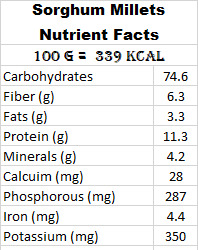

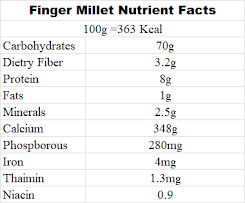
Minor Millets:- minor millets (nutri cereals) are the groups of small seeded cereals belonging to the family Poaceae they are
Foxtail millet (కోరలు)
Kodo millets (ఆరికలు)
Barnyard millet (ఊదాలు)
Little millet (సామలు)
Proso millet (వరిగలు)
Brown top millet (అండు కొర్రలు)
Foxtail Millet, also known as Kangni or Kakum in India, is a nutritious cereal grain that has been a staple food for thousands of years. In recent times, foxtail millet has gained popularity as a healthy alternative to rice and wheat due to its numerous health benefits. Foxtail millets have been cultivated in India for thousands of years and are believed to have originated in China. They were one of the first cereal crops to be cultivated in the country and were widely grown in ancient times. Foxtail millets were an essential part of the diet of people living in the Indus Valley Civilization and were also mentioned in ancient Indian texts like the Rigveda and the Atharvaveda. Foxtail millets are a rich source of protein, dietary fiber, and essential minerals like iron, calcium, and magnesium. They are also gluten-free and low in glycemic index, making them an excellent option for people with gluten intolerance or diabetes. Foxtail millets are also believed to have anti-inflammatory properties and may help in reducing the risk of chronic diseases like heart disease, cancer, and diabetes
Kodo millet, also known as Varagu in Tamil, Arikelu in Telugu, Kodra in Hindi, and Harka in Kannada, is a nutritious grain that is widely cultivated in India. It is a type of small, annual cereal grain that is grown mainly in the arid and semi-arid regions of India. Kodo millet is a gluten-free grain and is rich in nutrients, making it an excellent choice for people who are looking for a healthy alternative to rice or wheat. Kodo millet is a rich source of essential nutrients, including vitamins, minerals, and fiber. It is a good source of protein and is rich in antioxidants. Kodo millet is also high in dietary fiber, which can help improve digestion and promote weight loss. The millet is also low in glycemic index and helps in reducing the risk of diabetes, Kodo millet is an excellent source of iron, which is essential for maintaining healthy blood cells and preventing anemia. It is also a good source of calcium, which is important for maintaining healthy bones and teeth. Additionally, kodo millet contains several B vitamins, including thiamine, riboflavin, and niacin, which are essential for healthy brain function and maintaining energy levels
Little millets, also known as "Kutki" or "Sama" in India, are small, gluten-free grains that have been a part of Indian cuisine for centuries. These tiny grains are packed with nutrition and have numerous health benefits. In this blog, we will explore the origins and benefits of Little millets, as well as their role in Indian cuisine. Little millets are a rich source of dietary fiber, which aids in digestion and helps to regulate bowel movements. They are also high in protein, making them an excellent choice for vegetarians and vegans. additionally, they contain essential minerals like calcium, magnesium, and phosphorus, which help to maintain strong bones and teeth. Little millets are also an excellent source of antioxidants, which help to protect the body from free radical damage
Brown top millet, also known as Korale in Hindi, is a highly nutritious and versatile grain that is gaining popularity in India. It is a type of millet that is commonly grown in India, especially in the southern states of Tamil Nadu, Andhra Pradesh, and Karnataka.Brown top millet is a rich source of essential nutrients such as protein, fiber, iron, magnesium, and B vitamins. It is also gluten-free and low in glycemic index, making it an excellent choice for people with celiac disease or those looking to manage their blood sugar levels, the high fiber content in brown top millet help improve digestion and reduce the risk of colon cancer. It also helps lower cholesterol levels and reduces the risk of heart disease. Additionally, the magnesium content in brown top millet helps regulate blood pressure and improve bone health
Proso millet (Panicum miliaceum L.) is a warm season grass with a growing season of 60–100 days. It is a highly nutritious cereal grain used for human consumption, bird seed, and/or ethanol production. Unique characteristics, such as drought and heat tolerance
Brown top millet contains protein, fibre, and B vitamins, including niacin, thiamin, and riboflavin. It also contains magnesium, phosphorus, and iron. These nutrients improve health. Finally, Brown top millet supports energy generation, cognitive health, immune system function, and red blood cell creation in our body.
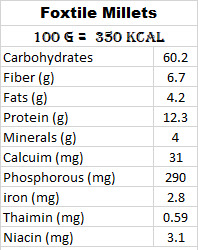
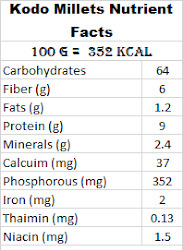

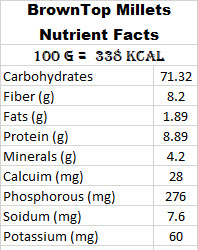

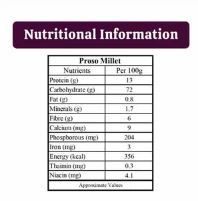
1 note
·
View note
Text
I'm thrilled to share with you an incredible #opportunity for aspiring #entrepreneurs and professionals in the #food#processing#industry! Join us for the Entrepreneurship Development Programme on Food Processing, a collaborative initiative between the prestigious National Institute for Micro, Small and Medium Enterprises (ni-msme) and the renowned #MANAGEMANAGE - National Institute of Agricultural Extension ManagementMANAGE CIA#agriculture#extension#management (MANAGE).
This comprehensive program, designed to equip participants with the knowledge and skills needed to thrive in the field of food processing, is set to ignite your entrepreneurial spirit and pave the way for successful ventures in this exciting domain 1️⃣ Identification of Food Processing Opportunities: Uncover untapped potential and discover lucrative avenues within the food processing sector. 2️⃣ MSME Schemes and Government Initiatives: Learn about the various support programs and initiatives available to empower your food processing enterprise. 3️⃣ Food Safety & Standards: Understand the importance of maintaining high-quality standards and compliance in the food processing industry. 4️⃣ Legal Compliances for Food Processing Industry: Gain insights into the legal aspects and regulations governing food processing ventures. 5️⃣ Marketing and Branding for Food Processing MSMEs: Master the art of effectively marketing and branding your food processing products to reach a wider audience. 6️⃣ Development of Food Processing Clusters: Explore the benefits of clustering and collaboration within the food processing sector for mutual growth. 7️⃣ Protecting Innovative Food Products through IPR: Discover strategies to safeguard your innovative food products through intellectual property rights. Why Attend? ✅ Gain in-depth knowledge about various aspects of food processing. ✅ Receive expert guidance, insights, and practical experiences from industry professionals. ✅ Expand your network by connecting with like-minded individuals and fellow entrepreneurs. ✅ Receive a prestigious Certificate of Participation, showcasing your commitment to professional growth.
👥 Who Can Attend? 🌱 Individuals who wish to start their own food processing business. 🍽️ Food processing entrepreneurs seeking to enhance their skills and knowledge. 👨💼 Professionals working in the food processing industry, eager to stay ahead of the curve. 🎓 Individuals involved in food processing research and academia, desiring practical insights. 🌍 Anyone interested in learning about the fascinating world of the food business.
Registration Link: https://lnkd.in/gyDSUgth
#msmes#foodprocessing#entrepreneurship#foodbusiness#nimsme#rural#agriculture#skills#FoodProcessingProgramme#development#professionalgrowth#onlinelearning#FoodProcessingIndustry#foodsafety#marketing#business#learning#opportunities#share#growth#collaboration#research#quality#network#branding#like#intellectualproperty

#msme loan#msme registration#msmes#foodprocessing#entrepreneurship#foodbusiness#nimsme#rural#agriculture#skills#FoodProcessingProgramme#development#professionalgrowth#onlinelearning#FoodProcessingIndustry#foodsafety#marketing#business#learning#opportunities#share#growth#collaboration#research#quality#network#branding#like#intellectualproperty#msmeindia
1 note
·
View note
Text
Online Workshop on Artificial Intelligence Tools for Professionals
Date: August 21-22, 2023
Time: 9:30 am to 5:00 pm
Duration: 2 days
Organizers: @National Institute for Micro, Small, and Medium Enterprises (#NIMSME) and @CSDSE Pvt. Ltd.
Contents of the Program:
How to talk to AI (Prompt Engineering): Learn how to effectively communicate with AI systems and optimize prompts for desired outputs.
Meeting efficiency using AI: Explore AI tools and techniques to enhance meeting productivity, automate tasks, and streamline communication.
Working with Excels using AI: Discover how AI can assist in data analysis, automation, and predictive modeling within Excel spreadsheets.
Working with PowerPoint using AI: Learn how AI can improve the creation, design, and delivery of impactful presentations in PowerPoint.
Research using AI: Gain insights into leveraging AI algorithms and tools to enhance research methodologies, data analysis, and knowledge discovery.
Job hunting using AI: Understand how AI-powered tools can aid in job search optimization, resume screening, interview preparation, and career guidance.
Day-to-day tasks using AI: Explore the application of AI in simplifying and automating routine tasks, increasing productivity, and improving work-life balance.
Why Attend:
Enhance your productivity: Acquire valuable skills and knowledge on using AI tools to streamline tasks, automate processes, and optimize efficiency in your professional work.
Stay updated with AI advancements: Get exposed to the latest trends, techniques, and tools in the field of artificial intelligence, empowering you to stay ahead in your industry.
Expand your network: Connect with professionals from diverse industries, including finance, marketing, healthcare, IT, research, consulting, and more, fostering collaboration and potential partnerships.
Gain practical insights: Acquire hands-on experience through practical sessions and case studies, enabling you to immediately apply AI tools and techniques to real-world scenarios.
Who Can Attend: The workshop is designed for professionals from various industries, including but not limited to finance, marketing, healthcare, IT, research, consulting, and academia. It is also beneficial for researchers, academics, and job seekers interested in leveraging AI tools for improved productivity and career growth.
#Artificial Intelligence #Online #Workshop#Professionals @AI #Tools, #Prompt #Engineering, #Meeting #Efficiency, #Excel, #PowerPoint, #Research, #Job Hunting, #Day-to-day #Tasks, #Productivity, #Networking, #Professionals, #Researchers, #Academics, #Job Seekers

#msme registration#msme loan#msme sector#msmeindia#Artificial Intelligence#Online#Workshop#Professionals @AI#Tools#Prompt#Engineering#Meeting#Efficiency#Excel#PowerPoint#Research#Job Hunting#Day-to-day#Tasks#Productivity#Networking#Professionals#Researchers#Academics#Job Seekers
1 note
·
View note
Text

International Programme on Business Plan for Startup
Start date 5 june 2 pm Online mode
1 week programme
A Joint International Programme of National Institute for MSME, Hyderabad, India and Vytautas Magnus University (VMU), Kaunas, Lithuania, Europe.
Model Canvas; Expected Incomes; Plans; Structures; Salaries; Budget
Marketing; Main Assets; Capital; Loans; Amortization; Budget
How to prepare the Best Presentation
Learning from friend’s mistakes
Presentations for Investors and Discussions.
Certificate will be issued on Successful Completion of the Programme.
1 note
·
View note
Text

Promotion and Development of Millets Based MSMEs
Promotion and Development of Millets-Based MSMEs Programme Organized by Ni-msme (National Institute for Micro, Small and Medium Enterprises) on 30th May 2023. 1-day Training Programme This program aims to support and empower micro, small, and medium enterprises (MSMEs) that focus on millets
1) Entrepreneurship Motivation 2) Millets Business Opportunities 3) Government Initiatives for Millets Entrepreneurship & Skill Development 4) MSME Policy and Schemes for Promotion of Millets Enterprises. 5) Business Plan Preparation for Millets Business 6) Millet Machinery Technical Aspects 7) Institutional Support
Why attend?
Gain insights into the potential of millet-based MSMEs and their role in sustainable development
Learn from successful entrepreneurs and experts in the field
Understand government initiatives and policies supporting millet-based businesses
Explore market linkages and opportunities for collaboration
Acquire knowledge and skills through technical sessions
Registrations will start soon
1 note
·
View note
Text
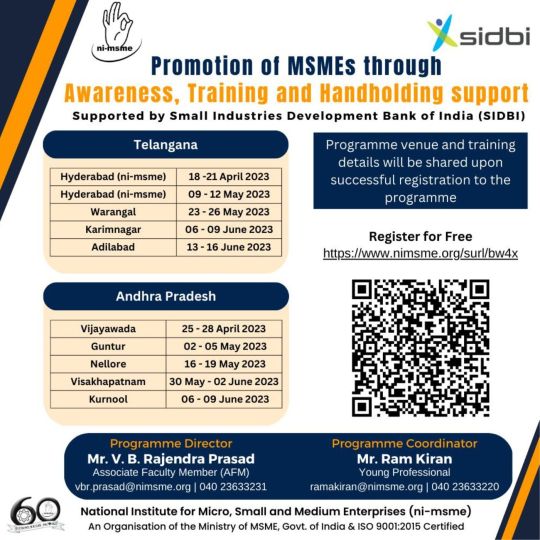
Promotion of MSMEs through Awareness, Training and Handholding support
National Institute for MSMEs (ni-msme) is conducting Free Entrepreneurial Awareness creation &, Entrepreneurship Development Training Programmes (non-residential) followed by handholding support with an objective of Promotion of MSMEs in Telangana and Andhra Pradesh, with the support of Small Industries Development Bank of India (SIDBI)
Entrepreneurial Awareness creation, Entrepreneurship Development Training
Free Entrepreneurial Awareness creation &, Entrepreneurship Development Training Programmes (non-residential) followed by handholding support with an objective of Promotion of MSMEs in Telangana and Andhra Pradesh, with the support of Small Industries Development Bank of India (SIDBI).
https://www.nimsme.org/surl/bw4x
2 notes
·
View notes